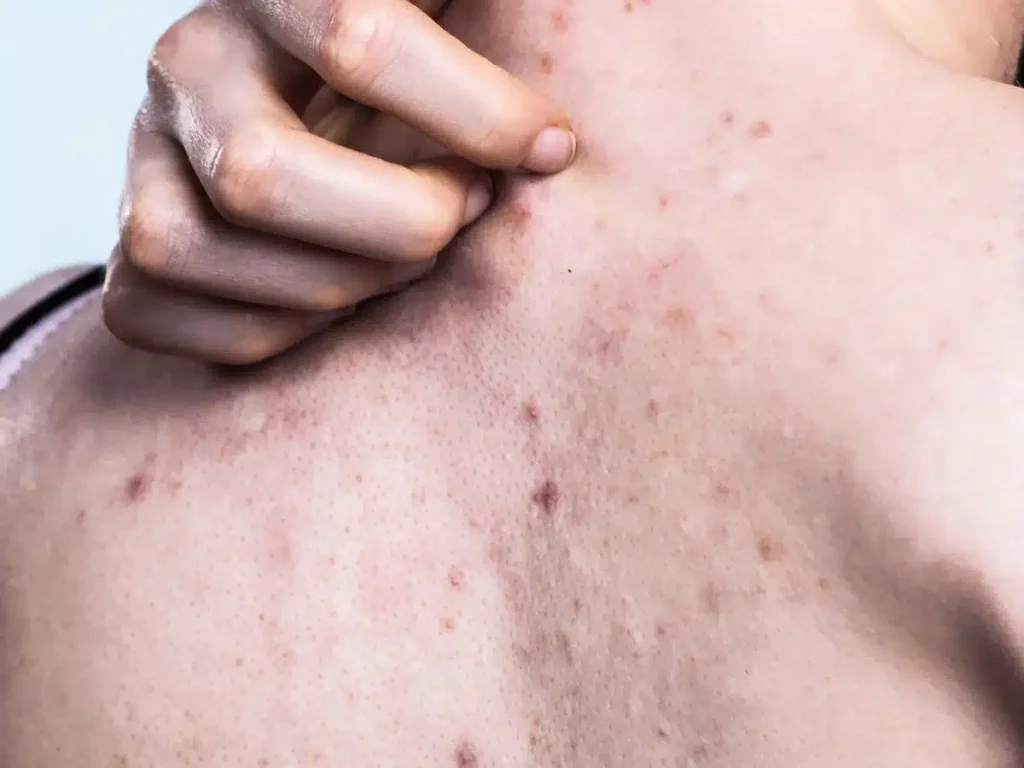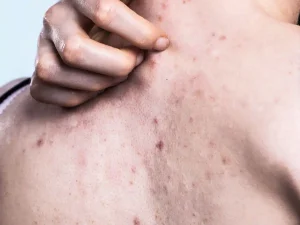You’ve tried everything. The salicylic acid, the benzoyl peroxide, the meticulous skincare routine. But those stubborn, itchy little bumps on your forehead or chest just won’t quit. Sound familiar? Well, you might be fighting the wrong enemy.
Here’s the deal: not all acne is created equal. What looks like a standard breakout could actually be a case of fungal acne—a completely different beast that laughs in the face of your usual anti-acne products. Let’s dive into the world of folliculitis and break down exactly how to differentiate fungal acne from its bacterial cousin.
What Are We Even Dealing With? The Root Cause
First things first, we need to understand the culprit. This isn’t just semantics; it’s the key to getting clear skin.
Bacterial Acne: The Classic Villain
This is the acne most of us know and loathe. Bacterial acne occurs when hair follicles get clogged with a combination of dead skin cells and excess sebum (your skin’s natural oil). This creates the perfect, airless environment for Cutibacterium acnes (or C. acnes) bacteria, which are already chilling on your skin, to overgrow.
The result? Inflammation. Your body’s immune system kicks in to fight the bacteria, leading to the classic red, swollen, and often painful pimples, pustules, and cysts.
Fungal Acne: The Imposter
Fungal acne, honestly, is a bit of a misnomer. Its technical name is Malassezia folliculitis. Instead of bacteria, it’s caused by an overgrowth of yeast—a type of fungus called Malassezia. This yeast is a normal inhabitant of your skin, but sometimes it gets a little too comfortable.
When you sweat a lot, live in a humid climate, or have an compromised skin barrier, that yeast can multiply deep within the hair follicle, feeding on the sebum. This leads to a rash of tiny, uniform bumps. It’s less about a bacterial infection and more about a fungal party in your pores.
The Tell-Tale Signs: A Side-by-Side Comparison
Okay, so the causes are different. But what does that look like on your skin? Here’s a straightforward breakdown.
| Characteristic | Fungal Acne | Bacterial Acne |
| Appearance | Tiny, uniform whiteheads or red bumps. All roughly the same size. | A mix of comedones (blackheads/whiteheads), red papules, pus-filled pustules, and large, deep cysts. |
| Texture & Sensation | Often intensely itchy. The itch can be the biggest clue. | Can be tender, sore, or painful to the touch, but rarely itchy. |
| Location | Common on forehead, chest, back, and upper arms. Often in clusters. | Typically on the face, but also common on the back, chest, and shoulders. |
| Response to Treatment | Worsens with traditional antibacterial acne treatments (especially antibiotics). | Often improves with antibacterial treatments like benzoyl peroxide and topical antibiotics. |
Think of it this way: bacterial acne is a chaotic battlefield with soldiers of all sizes (blackheads, cysts, you name it). Fungal acne, on the other hand, is a uniform army of tiny, itchy clones.
So, You’ve Self-Diagnosed… Now What? Targeted Care Strategies
This is where you stop spinning your wheels. Throwing the wrong product at your breakout can make it so much worse. Let’s get specific.
How to Treat Fungal Acne: Starve the Yeast
The goal here is to eliminate the yeast overgrowth. Since Malassezia feeds on certain oils, you need to be smart about your skincare.
- Antifungal Topicals: Over-the-counter solutions are your best friend. Look for creams, shampoos, or washes containing Ketoconazole (like Nizoral), Selenium Sulfide (like Selsun Blue), or Zinc Pyrithione. Use them as a mask on affected areas for a few minutes before rinsing, a few times a week.
- Oil-Free Everything: Malassezia loves certain oils, particularly fatty acids. You’ll want to audit your products and avoid those with plant oils, esters, and fatty alcohols. It’s a deep dive, but resources like folliculitisscout.com can help.
- Dandruff Shampoo Hack: This is a classic for a reason. Lathering up with an antifungal dandruff shampoo on your chest and back in the shower can work wonders. Just let it sit for 3-5 minutes.
- Oral Antifungals: For persistent cases, a doctor might prescribe an oral medication like Fluconazole. This is a heavy hitter and requires a professional diagnosis.
How to Treat Bacterial Acne: Kill the Bacteria and Unclog Pores
This is the classic acne-fighting playbook, focused on reducing bacteria and keeping pores clear.
- Benzoyl Peroxide: The gold standard. It kills C. acnes bacteria directly and helps reduce inflammation. Start with a lower concentration (2.5-5%) to avoid irritation.
- Salicylic Acid: A beta-hydroxy acid (BHA) that exfoliates inside the pore, helping to dissolve the clogs of dead skin cells and oil that start the whole mess.
- Retinoids: These vitamin-A derivatives (both prescription and OTC) are powerhouses. They accelerate cell turnover, preventing pores from getting clogged in the first place.
- Topical Antibiotics: Things like Clindamycin can help reduce bacteria, but they’re often used in combination with benzoyl peroxide to prevent bacterial resistance.
The Big Mistake: Why Using the Wrong Treatment Backfires
This is crucial. If you use a topical or oral antibiotic for fungal acne, you’re basically pouring gasoline on a fire. Antibiotics kill bacteria, right? But they don’t touch fungus. In fact, by wiping out the bacterial competition on your skin, they create an open playing field for the Malassezia yeast to multiply even more.
It’s one of the biggest reasons people get frustrated. Their “acne” gets worse with treatment, and they can’t figure out why. Well, now you know.
When to See a Dermatologist
Sure, you can try the OTC routes. But if your skin isn’t responding, or you’re just not sure what you’re dealing with, it’s time to call in the pros. A dermatologist can often diagnose you just by looking at your skin. Sometimes, they might even do a simple, quick test—scraping a tiny bit of skin and looking at it under a microscope to spot the yeast.
Getting the right diagnosis saves you time, money, and a whole lot of heartache.
A Final Thought on Your Skin’s Ecosystem
Our skin is a complex, living ecosystem. A delicate balance of bacteria, yeast, and oil. Sometimes, that balance gets thrown off—by our environment, our products, our hormones, or even our treatments. The journey to clear skin isn’t about declaring war on your skin; it’s about learning to listen to it. It’s about understanding the subtle signals, like a persistent itch or a cluster of uniform bumps, that point to a deeper imbalance.
So the next time you look in the mirror at a breakout that just doesn’t seem right, ask the right questions. Is it itchy? Is it uniform? Is it defiant? Your skin is trying to tell you something. The trick is learning to understand its language.







More Stories
Adaptogenic Herbs and Their Role in Managing Stress-Induced Acne
How AI is Revolutionizing Acne Diagnosis and Treatment in 2025
Adult Acne-Causes and Treatments